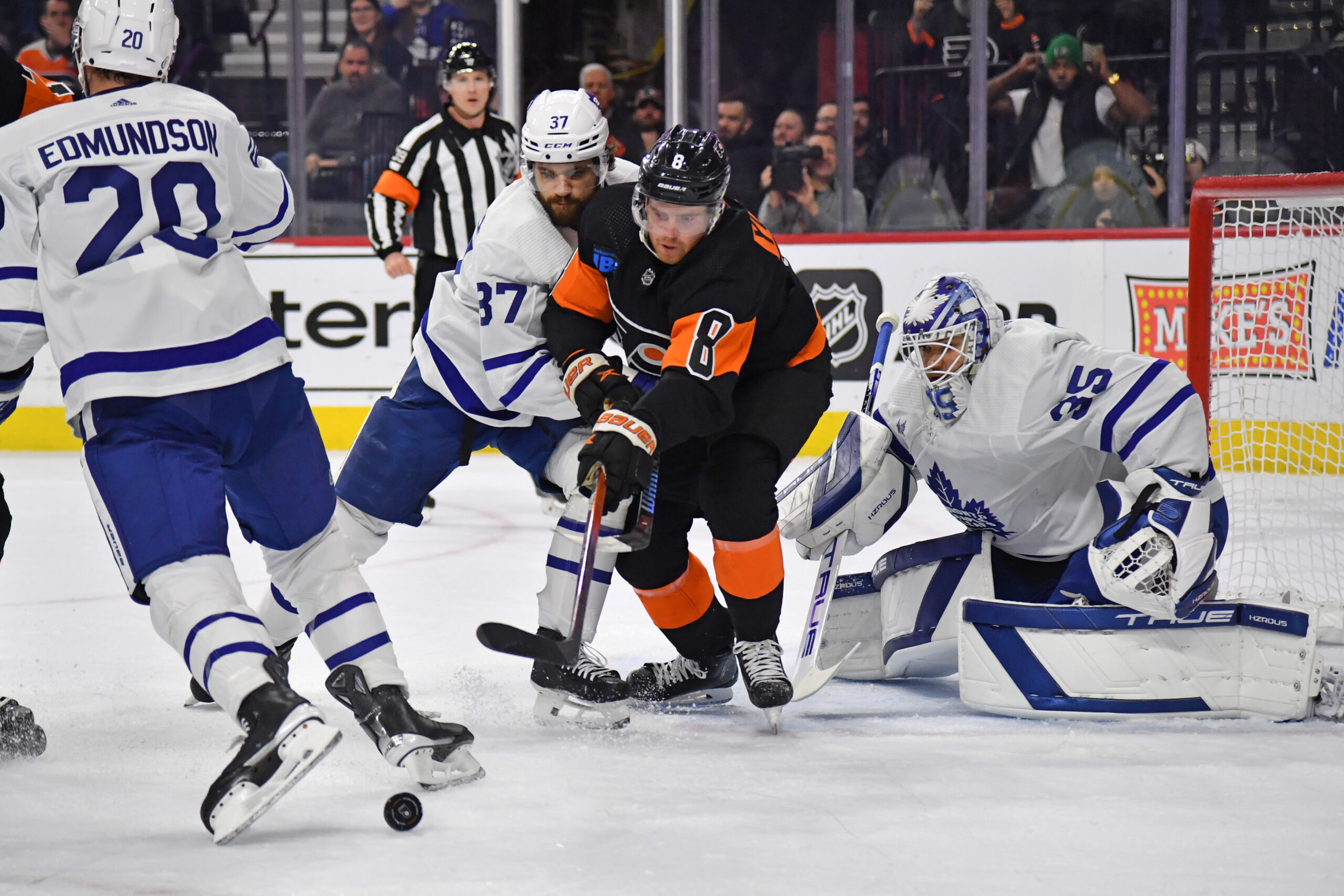Toronto Maple Leafs defenceman Timothy Liljegren is the perfect acquisition for the Pittsburgh Penguins to bridge the present and future of the team. The Pittsburgh Penguins have found themselves in a delicate balancing act between staying competitive during the Crosby-Malkin era and building for the future. An area of concern is the Penguins defensive depth on the right side. A defenceman like Timothy Liljegren, a 24-year-old puck-moving defenceman on the Toronto Maple Leafs presents an ideal trade option. Here’s why Liljegren fits the Penguins’ organizational needs.
Navigating Cap Constraints
Acquiring Liljegren means making room for his cap hit of $3 million per season. However, the Penguins have a couple of realistic ways to clear space. A few contracts could be moved out.
Noel Acciari
At $2 million per season, Acciari’s contract would not be too difficult to offload. The organization has picked up a great amount of bottom-six depth since Acciari’s signing, making him potentially redundant. Forwards like Rutger McGroarty, Jesse Puljujärvi, and Valtteri Puustinen have been scratched due to the logjam at forward that could be lessened with an Acciari move. Although he provides valuable defensive play on the fourth line, the aforementioned players are fully capable of providing similar results on cheaper contracts.
Tristan Jarry
The Pittsburgh Penguins were already linked to trade rumours involving starting netminder Jarry early in the summer. He carries a $5.375 million cap hit for the next four seasons. While trading him could be risky, it would open the door for Alex Nedeljkovic and Joel Blomqvist to take over goaltending duties. Jarry has struggled in important games throughout his career, and his price tag is inflated compared to his play. Finding a trade partner for Jarry wouldn’t be easy, although teams like the Colorado Avalanche are in desperate need of solid goaltending.
Ryan Graves
Struggling on the third pairing while earning $4.5 million per season, moving on from Ryan Graves would make sense even without the acquisition of Timothy Liljegren. Graves has not lived up to expectations with the Penguins, and his bloated salary could be allocated much better if spread to Liljegren and elsewhere in the lineup.
Addressing the Penguins’ Right-Handed Defensive Depth Issue
A need of the Pittsburgh Penguins is shoring up their right-handed depth with a third pairing defenceman. Kris Letang and Erik Karlsson are no slouches, both are elite offensive defencemen. However, they are the only reliable right-handed options on defence on the roster. Beyond the pair, the Penguin’s defensive depth is filled with fringe left-handed defenceman. This imbalance forces head coach Mike Sullivan to play a left-handed defenceman on their off-side. This is not necessarily sustainable when the pairing made to perform like this also has to isolate and shelter Ryan Graves on the third pairing.
Timothy Liljegren’s right-handed shot and puck-moving ability would address this weakness on the third pairing immediately. He can comfortably slot into the third pairing alongside the slew of defensive options the Penguins can pair him with. He would be useful on the second power play unit as well since both Letang and Karlsson play on the Penguin’s top unit.
Focusing on Future Defensive Depth
The Penguins’ long-term defensive depth is another area needing attention. Although Letang and Karlsson are key contributors at the moment, both are in the twilight of their careers. The Penguins lack a defenceman in their prospect system that plays a similar style as well. Owen Pickering is a promising two-way, left-handed defenceman. However, he is not a natural puck-mover in a similar sense to Liljegren. Meanwhile, prospect Harrison Brunicke is likely a couple of years away from being NHL-ready.
At just 24 years old, Timothy Liljegren represents a bridge connecting the present and future of the Penguin’s defence. He is a young and NHL-ready puck-moving defenceman. Even with nearly 200 games of NHL experience, he still has room to grow. Acquiring Liljegren would allow the Penguins the opportunity to mould a player with high upside into a capable top-four defenceman. His role will only grow more important as Karlsson and Letang decline.
Potential Low-Cost Acquisition with High Upside
Timothy Liljegren finds himself in a crowded Maple Leafs system. He has had to compete with various players that have hopped over him in the defensive depth chart. He has not played in the Leaf’s first three games of the season and would likely come to Pittsburgh at a relatively low cost. The Penguins organization has had experience buying low on skilled but struggling players before. Justin Schultz was moved from Edmonton in 2016 for just a third-round pick. Following some time in the Penguins system, Schultz’s production exploded in Pittsburgh when given the chance to develop his game.
Conclusion: A Move for the Present and Future
Timothy Liljegren checks all the boxes for what the Pittsburgh Penguins currently need in a defenceman. Right-handed, young, with offensive upside. Although acquiring him would require some cap-clearing moves, his potential outweighs his perceived risks. Liljegren would provide immediate support to the Penguin’s third pairing while simultaneously positioning the organization to have a solid top-four defensive option for when Letang and Karlsson’s careers are done. With the right moves, general manager Kyle Dubas could acquire Liljegren at a reasonable cost from his former team. A potential Liljegren acquisition could ultimately shift the Penguins blueline for years to come.
Main Photo Credit: Eric Hartline – USA TODAY Sports






